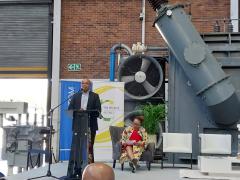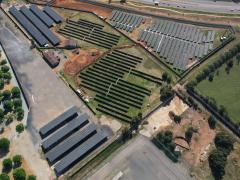South Africa has an urgent problem hiding in plain sight. Our economy needs around 30 000 newly qualified artisans each year to keep infrastructure, construction and industry running smoothly. Yet year after year, far fewer artisans are produced. The Department of Higher Education and Training has acknowledged that this shortfall is one of the biggest obstacles to achieving the goals of the National Development Plan, says Kevin Buret, Head of Campus at NewGen Trade Schools.
Employers across the mining, energy, construction and manufacturing sectors consistently highlight the lack of skilled tradespeople as one of their greatest challenges. In the energy space, this shortage has real-world consequences:
- Renewable energy plants cannot be built without electricians and welders
- Substations and transmission lines cannot be maintained without properly trained technicians
- Large-scale projects are delayed or stalled simply because the right skills are not available
At the same time, thousands of young South Africans between the ages of 15 and 19 are leaving or drifting through mainstream schooling with limited prospects. Many are labelled as struggling learners or find themselves in environments that do not suit their talents. For these young people, the existing technical and vocational education and training system is often difficult to access and not always designed with their needs in mind.
These two challenges are deeply connected:
- On one side sits an economy in desperate need of skilled workers.
- On the other side sits a generation at risk of joining South Africa’s already alarming youth unemployment figures.
Bringing them together through a different kind of schooling could be one of the most effective ways to close this gap.
A trade-focused school designed specifically for this younger age group offers a practical, age-appropriate environment. Learners start with three months of classroom-based training where the emphasis is on practical rather than theoretical skills. This is followed by a 33-month apprenticeship with vetted employers, ensuring that training translates immediately into workplace experience. Graduates leave with a Red Seal trade certificate and an NQF Level 4 qualification, placing them among the most employable artisans in the country.
Because these schools cater only to teenagers, they offer a safer and more supportive learning environment than mixed-age colleges. Life skills and personal development are built into the curriculum, giving young people not only technical expertise but also confidence, accountability and resilience.
A critical feature of this model is the close partnership with industry. Apprenticeships are structured and digitally monitored, providing real-time feedback to trainers and employers. This reduces risk for companies, helps maintain consistent quality across workplaces and ensures learners are progressing effectively.
For too long, trades have been viewed as a fallback option. In reality, skills such as electrical work, plumbing and welding are among the most future-proof careers available. As South Africa modernises its grid and expands renewable generation, these skills will remain vital and highly sought after. They are also entrepreneurial by nature, offering young people the opportunity to start their own businesses and contribute to local economies.
To solve the artisan shortfall, collaboration is essential. Government can support youth-focused trade schools through bursaries and policy recognition. Employers can expand partnerships to create more apprenticeship placements and benefit from a reliable, skilled workforce. Schools and parents can change the conversation by presenting trades as respected, rewarding career paths rather than second-choice options.













